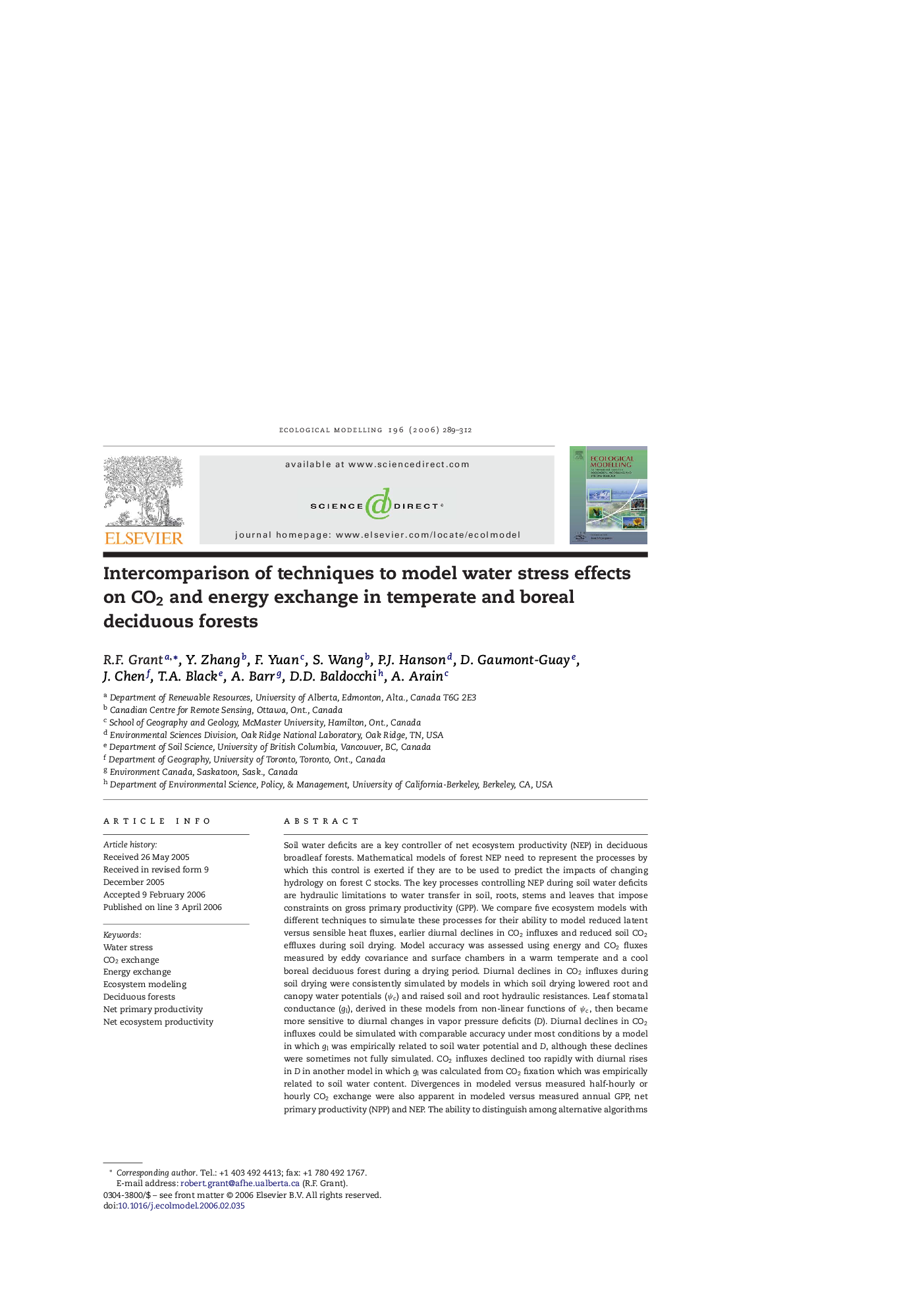| Article ID | Journal | Published Year | Pages | File Type |
|---|---|---|---|---|
| 4379151 | Ecological Modelling | 2006 | 24 Pages |
Soil water deficits are a key controller of net ecosystem productivity (NEP) in deciduous broadleaf forests. Mathematical models of forest NEP need to represent the processes by which this control is exerted if they are to be used to predict the impacts of changing hydrology on forest C stocks. The key processes controlling NEP during soil water deficits are hydraulic limitations to water transfer in soil, roots, stems and leaves that impose constraints on gross primary productivity (GPP). We compare five ecosystem models with different techniques to simulate these processes for their ability to model reduced latent versus sensible heat fluxes, earlier diurnal declines in CO2 influxes and reduced soil CO2 effluxes during soil drying. Model accuracy was assessed using energy and CO2 fluxes measured by eddy covariance and surface chambers in a warm temperate and a cool boreal deciduous forest during a drying period. Diurnal declines in CO2 influxes during soil drying were consistently simulated by models in which soil drying lowered root and canopy water potentials (ψc) and raised soil and root hydraulic resistances. Leaf stomatal conductance (gl), derived in these models from non-linear functions of ψc, then became more sensitive to diurnal changes in vapor pressure deficits (D). Diurnal declines in CO2 influxes could be simulated with comparable accuracy under most conditions by a model in which gl was empirically related to soil water potential and D, although these declines were sometimes not fully simulated. CO2 influxes declined too rapidly with diurnal rises in D in another model in which gl was calculated from CO2 fixation which was empirically related to soil water content. Divergences in modeled versus measured half-hourly or hourly CO2 exchange were also apparent in modeled versus measured annual GPP, net primary productivity (NPP) and NEP. The ability to distinguish among alternative algorithms for their accuracy in calculating CO2 and energy fluxes was often limited by uncertainty in the measurement of these fluxes using eddy covariance, especially when low wind speeds and stable boundary layers reduced atmospheric turbulence.
